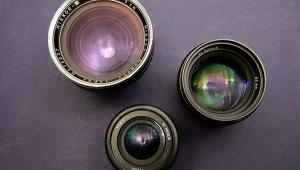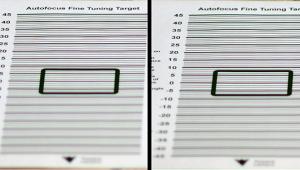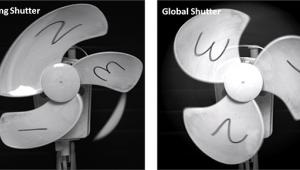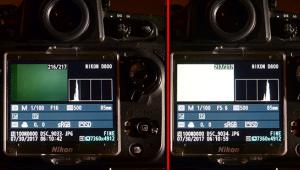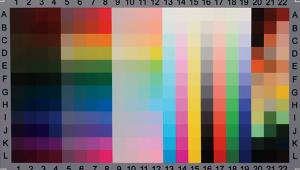Why Aspect Ratio Is Important to Your Photography

Before you bought your last camera, did you weigh the pros and cons of the sensor’s aspect ratio? My guess is no—not in the face of more solemn considerations such as style, trim, and a boastful shoulder strap.
However, aspect ratio has a baked-in influence on resolution, lens weight, and how you’ll display your artful efforts. And in most cases, the ratio has been set, not by what would be best for you, but by ad hoc decisions made before the Spanish American War.
Aspect ratio is the width-to-height ratio of your sensor. For a full-frame DSLR, the sensor is 36x24mm in size, for an aspect ratio of 3:2. Ditto, 35mm film. For non-full-frame cameras, the sensor is smaller but the aspect ratio is usually the same.
So where did that 3:2 ratio come from? It wasn’t handed down by Moses. Rather, it derives from the work of a Thomas Edison employee, W. L. Dickson. Edison was interested in peep shows, short movies available at penny arcades (he wasn’t prescient enough to see that theaters would be the real market).
Around 1890, Dickson was experimenting with the smallest film size that would work for these carnival amusements, and concluded that the images needed to be about one-inch wide. He also realized that perforations on both sides of the film are mechanically useful. He slit 70mm film purchased from George Eastman and punched in the sprocket holes. Voilà: a format that became a world standard for theatrical films for more than a century.
Dickson chose a movie frame that was 24x18mm in size, for an aspect ratio of 4:3. Why he did this is known only to him, and these days he’s fairly taciturn. However, the consequences were felt well into the present century, as 16mm film also has a 4:3 aspect ratio, prompting the same standard for TV (which used a lot of 16mm footage). Only with HDTV has the ratio been stretched to 16:9.
Still photography had its own standards, but none as pervasive as for movies. There were 8x10-inch view cameras (which, when divided, produced the 4x5-inch film size that dominated the newspaper industry for three decades). But such hefty formats were poorly suited for candid shots or for photogs who didn’t pump iron.

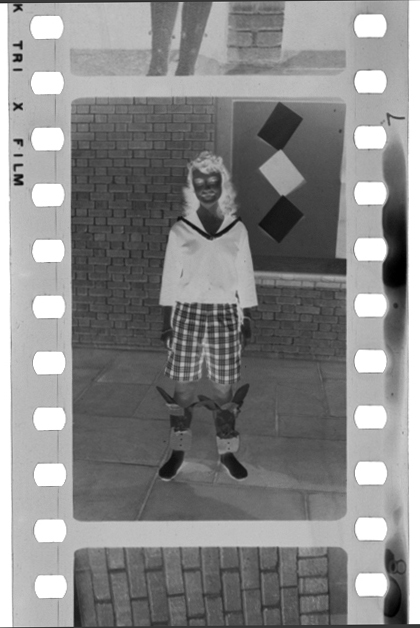
Things changed around the time of the First World War with the advent of compact cameras, including the first Leicas, that you could load up with relatively ubiquitous 35mm movie film. Engineers realized that Dickson’s 24x18mm frame was a bit small for really good quality photos (it works in movies because you see 24 images each second, averaging the grain). They chose to use two movie frames, producing images that were 36x24mm—the same 3:2 aspect ratio you accept today as a law of the universe.
OK, so what? Well, if you make prints, you’ll notice that papers come in sizes that often don’t play well with the aspect ratio of your sensor. I routinely make prints on 8x10-inch paper. Shots from a full-frame DSLR have to be cropped to 83 percent of their original area. My 36-megapixel camera is now a more modest 30 megapixels. This is one advantage of the Four Thirds and Micro Four Thirds system cameras, whose aspect ratio doesn’t demand this pixel tax when printed to 8x10 inches.
But there’s another cost to any non-square aspect ratio: the size of the lens. Lenses are circular, an unsurprising statement but with the obvious consequence that these optics must be designed to cover—with minimum aberrations—the longer dimension of your sensor, making them oversized and overbuilt. The greater the aspect ratio, the more nose poundage your camera will have, all other things being equal.
What’s ideal? In earlier columns, we’ve noted that the field of view of the human visual system is roughly 180x90 degrees. That’s an aspect ratio of 2:1, which is pretty close to the 16:9 aspect ratio of your HD television.
But a 2:1 aspect ratio would result in unduly large and expensive lenses. Eastman himself was aware of this problem when he introduced the first Kodak camera in 1888. The aspect ratio was 1:1—the pictures were circular. That forestalled problems in leveling, and the images were reasonably sharp because only the central part of the lens was used.
Too bad circular prints don’t easily fit in your wallet.
Seth Shostak is an astronomer at the SETI Institute who thinks photography is one of humanity’s greatest inventions. His photos have been used in countless magazines and newspapers, and he occasionally tries to impress folks by noting that he built his first darkroom at age 11. You can find him on both Facebook and Twitter.

